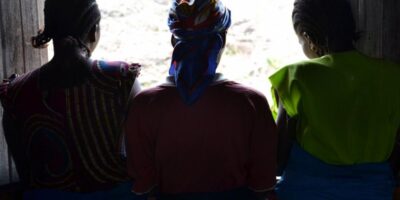« The Haitian student is not familiar with their country’s culture, leaving their learning incomplete, » says Jacques Michel Gourgues, a doctor in Educational Sciences
In Haiti, the cultural deficit in schools contributes to dropout rates and a loss of connection between generations, compromising social cohesion, according to specialists contacted by AyiboPost.
« The Haitian student does not know their country’s culture, leaving their learning incomplete, » says Jacques Michel Gourgues, a doctor (PhD) in educational sciences.
Important components such as Haitian music, painting, dance, and cuisine, historical monuments, the country’s tourist and mystical attractions, and other local knowledge that should contribute to the construction of a common identity and the development of the learner are not sufficiently highlighted, according to Gourgues.
« Our African origins, for example, are not emphasized enough in our school curriculums. Students know very little about them, apart from the geographic location of the continent, » continues the researcher.
« All this creates citizens detached from their own reality, » emphasizes the author of the book « Textbooks in Haiti: Tools of the Colonial Era, » published in 2016.
Our African origins, for example, are not emphasized enough in our school curriculums. Students know very little about them, apart from the geographic location of the continent
Read also: Nesmy Manigat: «Enterè ekonomik manipile anpil opinyon sou zafè refòm»
The integration of new subjects into school curricula, the promotion of Creole, and the signing of several memorandums of understanding with other cultural institutions are part of these efforts.
Read also: Opinyon | Sanble lekòl ayiti pi konsèvatè pase legliz
Only 10% of the state budget is allocated to education, and the share of the Gross Domestic Product (GDP) allocated to education is only 1%.
Some guardians have a very negative perception of art. They equate it to a ‘waste of time’
Read also: Due to the insecurity in Haiti, cultural centers can no longer operate
Cultural events are becoming rare and attracting fewer and fewer people. Access to historical, heritage, and archaeological sites has become increasingly difficult.
Read also: La lente agonie du MUPANAH
In an effort to reach out to the public outside of Port-au-Prince, the MUPANAH used to organize commemorative events in provincial cities. However, these activities no longer take place in the current context.
However, once the activities are over, the fact remains: the absence of exhibition and valorization spaces hindering the creative momentum of young people.
Read also: The bandits spare no libraries in Port-au-Prince
Unlike before, there has been a drop in library attendance relative to the current context of the country.
By Lucnise Duquereste & Wethzer Piercin
Civer image : On May 18, 2023, a Haitian schoolgirl participates in a parade at her school in Pétion-Ville during the celebration of the 220th anniversary of the creation of the Haitian flag. | © Jean Feguens Regala/AyiboPost
In Haitian Creole | Watch this report produced by AyiboPost in 2021 about traditional tales in Haiti and their importance in education:
Gardez contact avec AyiboPost via :
► Notre canal Telegram : cliquez ici
► Notre Channel WhatsApp : cliquez ici
► Notre Communauté WhatsApp : cliquez ici







Comments